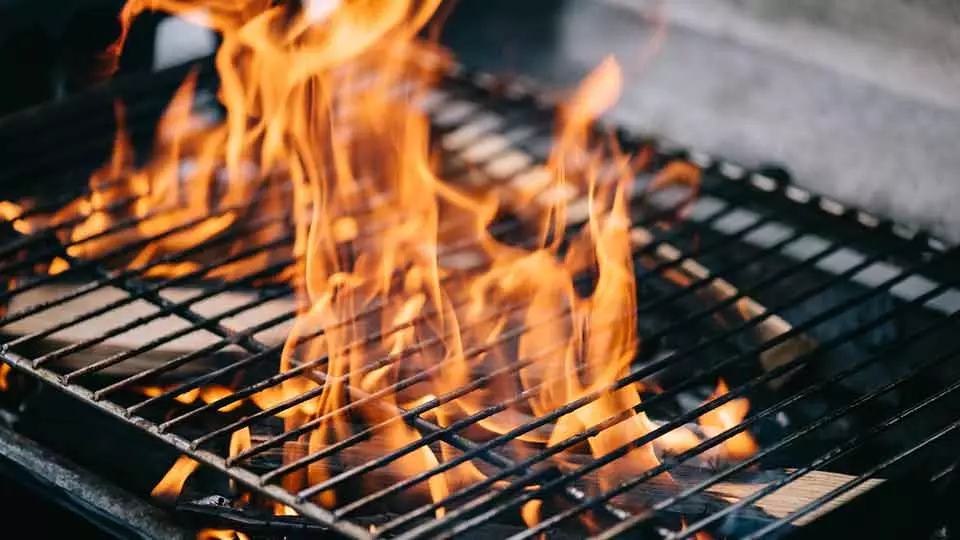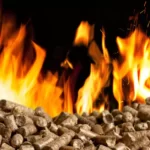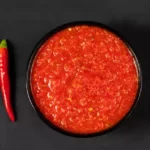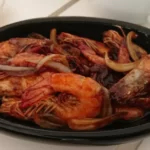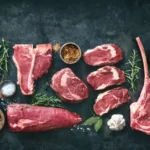Campfires and grills have long offered us a primal way to cook food, combining the elements of heat, smoke, and raw ingredients. The type of wood we use in this process plays a crucial role in the end result, influencing everything from the temperature of the flames to the flavor imparted to the food.
Is it okay to cook over pine wood? It’s a question often posed by outdoor cooking enthusiasts and professionals alike. The short answer is yes, with reservations. While pine wood is not the preferred choice for many, it can be used for cooking under certain circumstances and with particular precautions.
The unique characteristics of pine wood, both advantageous and disadvantageous, lend a distinctive quality to the cooking process. Its high resin content, intense heat generation, and smoky output have sparked debates about its suitability for use in outdoor grills and fire pits.
The Nature of Pine Wood
Key Characteristics of Pine Wood
Pine wood is a type of softwood that’s plentiful in many parts of the world. Its high sap and resin content make it burn hotter and faster compared to many hardwoods. While this might seem beneficial for cooking, it is these very characteristics that have led to a controversial reputation when it comes to its usage in grills and fire pits.
Pine Resin: A Distinctive Feature
One of the defining characteristics of pine wood is its high resin content. When burned, this resin can create a lot of smoke, potentially impacting the taste of food. Additionally, burning pine wood can lead to the formation of creosote, a black, oily substance that can coat the interior of your cooking equipment and pose a fire hazard.
Advantages of Cooking Over Pine Wood
Heat and Flame Control
Pine wood’s rapid burn rate results in high, intense flames that can be advantageous for certain cooking methods. For instance, when searing meat or charring vegetables, the robust heat can provide the required temperature swiftly.
Availability and Cost-effectiveness
Pine trees are widespread and grow rapidly, making pine wood readily available in many regions. Its abundance also makes it an affordable choice compared to some hardwoods.
Disadvantages of Cooking Over Pine Wood
Pine Wood and Food Flavor Alteration
The significant downside of cooking over pine wood is the potential alteration in food flavor. The heavy smoke produced by burning pine can impart a strong, often unpleasant taste to the food.
Health Concerns Linked to Pine Wood Smoke
Cooking over pine wood may also have health implications. The smoke produced when burning pine contains harmful compounds, including creosote, which can lead to health problems if inhaled in large quantities.
Pine Wood versus Other Wood Types for Cooking
Cooking Over Hardwoods: Oak, Hickory, and Maple
The choice of wood can significantly impact the flavor, smoke level, and overall quality of your cooking experience. Hardwoods like oak, hickory, and maple have been the favorites of pitmasters and chefs for centuries.
- Oak: Oak is an excellent all-rounder for smoking and grilling. It burns for a long time, produces consistent heat, and imparts a medium-strong flavor that is seldom overpowering. It’s a great choice for smoking briskets, sausages, and other large cuts of meat.
- Hickory: Known for its pungent, smoky, bacon-like flavor, hickory is often used when smoking pork and ribs. However, it’s potent and can easily overpower the dish, so use it sparingly unless you are going for a strong, smoky finish.
- Maple: Maple wood creates a mild, slightly sweet smoke, making it perfect for smoking poultry and small game birds. It burns slower and cooler than oak and hickory, making it ideal for slow and steady smoking.
Comparison with Fruitwoods: Apple and Cherry
On the other hand, fruitwoods such as apple and cherry offer a different experience.
- Apple Wood: It burns slower and produces a gentle, fruity smoke. Its mild and sweet flavor profile makes it a good choice for smoking poultry, pork, and fish. It pairs exceptionally well with lighter meats and is a favorite amongst many barbecue enthusiasts for its subtle sweet and fruity flavor.
- Cherry Wood: This wood provides a sweet and fruity smoke, excellent for adding a light, smoky flavor to virtually all meats. It’s a great choice for smoking ham, chicken, and turkey. What’s more, cherry wood gives a rich mahogany color to the meats, making your dishes not only delicious but also visually appealing.
Safe Practices for Cooking Over Pine Wood
Tips for Cooking Over Pine Wood Safely
When cooking with pine wood, it’s essential to ensure that it’s done safely. Here are a few tips:
- Use Well-Seasoned Wood: Fresh pine has higher sap content, which leads to more smoke and potential flavor issues. Seasoned pine, dried for at least six months, will burn cleaner and more evenly.
- Mix With Other Woods: To avoid overpowering flavors, consider using pine as part of a mix with other hardwoods. This approach can also help mitigate some of the intense heat from the pine.
- Keep Your Grill Clean: Regular cleaning is essential when using pine wood to prevent the buildup of creosote, a byproduct of burning pine that can create a fire hazard.
Exploring Alternatives: Pine Wood-derived Products
If you’re looking for the benefits of pine without the challenges, consider using pine wood-derived products like pine pellets. These products provide the high heat output of pine, minus the heavy smoke, making them an excellent alternative for many cooking applications.
Cooking Over Pine Wood: Expert Opinions
Professional Chefs’ View on Pine Wood Cooking
For professional chefs, the use of pine wood is a matter of preference and often depends on the specific dishes being prepared. Some chefs enjoy the unique flavor that pine can bring to specific dishes. However, the majority prefer other types of wood due to pine’s potential to overpower the dish’s flavors and the health risks associated with its smoke.
Barbecue Enthusiasts and Pine Wood: A Mixed Bag
The barbecue community’s view on pine wood is diverse. Some individuals enjoy the unique, strong flavor that pine wood can impart to certain meats, while others avoid it due to its intense smoke and potential health concerns.
Frequently Asked Questions
Can you use pine wood for smoking meat?
Yes, you can technically use pine wood for smoking meat, but it’s not generally recommended due to the strong flavor it imparts and the potentially harmful compounds present in the smoke.
Is it dangerous to cook over pine wood?
Cooking over pine wood can be risky due to the production of potentially harmful compounds like creosote. However, with proper precautions, it can be done safely.
What is the best wood to cook over?
The best wood to cook over varies depending on your preferences and the type of food you’re cooking. Generally, hardwoods like oak, hickory, and fruitwoods like apple and cherry are preferred for their mild, sweet flavors.
Conclusion
The decision to cook over pine wood is dependent on balancing its pros and cons. While its availability and high heat output make it an attractive option, the potential for altered flavor and health risks pose legitimate concerns.
Ultimately, while pine wood can be used for cooking, it’s crucial to do so judiciously and with proper safety measures. It may not be the top choice for most cooks, but with a careful approach, it can have its place in the open fire cooking repertoire.
It’s essential to remember that the most critical element of cooking over wood, be it pine or any other type, is to enjoy the process. The flames, the smoke, the aroma of food grilling over an open fire – these experiences encapsulate the sheer pleasure of outdoor cooking.

